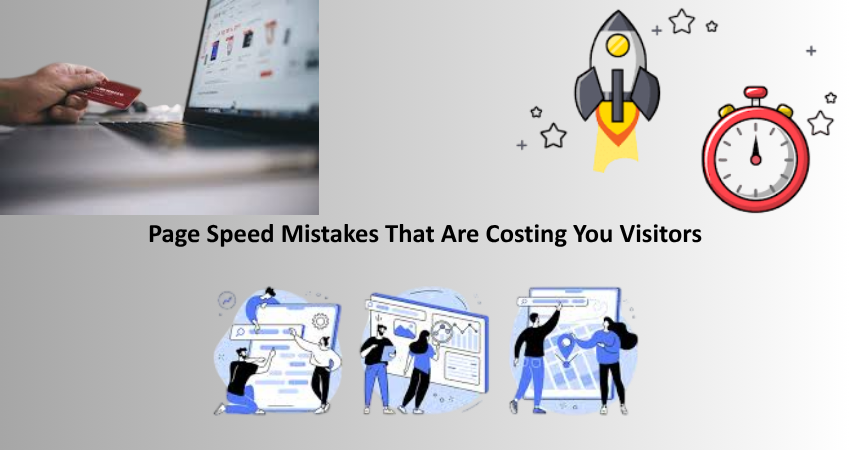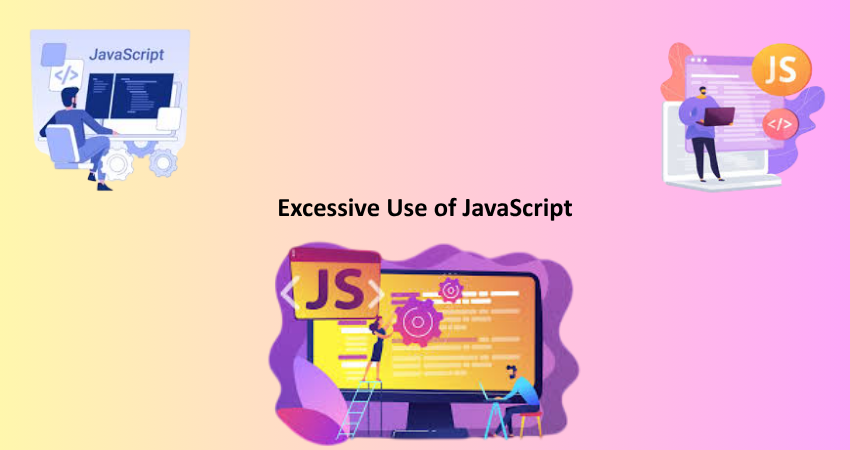
Introduction
In a fast-moving digital environment, page speed turns out to be synonymous with user experience, search engine rankings, and conversion rates. A matter of a few seconds can send a fair number of visitors hopping away to other sites, hence the importance of page speed optimization in web development and marketing strategies. Where internet users demand instant access to content, a slow-loading website is bound to be abandoned long before viewing is completed. With that in mind, page speed optimization is amongst the most critical aspects of any web development strategy or digital marketing initiative.
When faced with slow-performing websites, users’ trust towards the brand dissipates, and they are less likely to return. Also, Google ranks your website according to page speed, which means an underperforming site works directly against your SEO efforts. Knowing some of the major mistakes that can slow down your website is helpful for avoiding these mistakes in real-life applications for a smoother and enjoyable user experience. In this article, we present some of the most common mistakes around page speed and tips to avert them that can lead to improving the performance of your website and capturing a large number of visitors.
Not Optimizing Images
Oversized Image Files
Probably one of the most usual mistakes with impacts on page speed is to use too large image files. Most websites use high-resolution images without knowing that the upload would also go along with it. High-quality images attract users anyway, but the uncompressed or improperly scaled images can much slow down the site. Large images take up increased bandwidth and take longer to be downloaded before rendering web pages, especially for mobile and those with slower internet connections.
Image optimization does not refer to picture sacrifice. TinyPNG, ImageOptim, and the inno eb plugins of most CMS allow development and content creators to compress images while conserving their veracity. Further file size reductions are possible without a legal drop in quality by converting the most common images to newer formats like WebP. In so doing, you improve page speed, allowing users to move around disabled more smoothly.
Lack of Lazy Loading
Lazy loading is a method of performance optimization that provides for the postponement of loading non-critical resources such as off-screen images until just prior to their need. Not doing lazy loading implies that all images are loaded at once, whether on-screen or off-screen. This unnecessarily burdens the browser so that the time taken for the displayed page to become interactive is increased.
For websites that are always full of content such as blogs, e-commerce product details, and photo galleries, lazy loading can be implemented efficiently. Images load lazily, meaning they will be loaded as users scroll down, greatly reducing the initial load time and improving perceived performance. Web performance optimization using the HTML5 loading attribute or JavaScript library means that lazy loading is now easy to add on your site for speed and efficiency in a browsing experience.
Excessive Use of JavaScript

Unminified or Uncompressed JavaScript Files
JavaScript is an absolute necessity for adding dynamic behaviors and interactivity to websites, while on the contrary, too much bad JavaScript can cripple page speed. Another key factor is unminified or uncompressed JavaScript files. Unminified scripts contain unneeded characters such as white spaces, comments, and formatting, which means larger file sizes and slower load times.
Upcoming revisions will entail shrinking the file size by taking away unnecessary objects so that the browsers can better handle the parsing and execution of that code. Even further, to minimize page performance impact, JavaScript files can also be compressed using Gzip or Brotli algorithms. Optimized delivery of JavaScript, therefore, allows for great improvements in web-loading speed and user response time.
Blocking JavaScript on Critical Paths
The major mistake is that JavaScript content has been preventing rendering within the path of critical rendering. If scripts are put in the head of a document, but not loaded asynchronously, they will stop a rendering of any page elements until this script finished loading entirely. This waiting period causes a blank screen and waiting times that annoy users and ultimately increase the bounce rate.
For this reason, the developer should move any non-essential JavaScript to the end of a page or it may load asynchronously using the async or defer attributes. This allows scripts to go by that do not interfere with rendering of initial content and promotes quicker interaction with the page. The entire process improves loading times significantly and enhances user experience in general.
Inefficient CSS Practices
Unused CSS and Large Style Sheets
CSS is important for website design, but improper practices concerning CSS can hinder page speed. One very common problem is the existence of unused CSS rules within large style sheets. As time goes by, styles that have been rendered unnecessary are added up. Accumulation of all such styles increases the size of the CSS file, thereby delaying the rendering of the browser.
To resolve the above issues, developers can conduct an audit of their CSS and clean it up by using a tool such as PurifyCSS or UnCSS, or even browser developer tools. Removing any unused styles improves performance so that when a designer leaves CSS code with large properties, the browser doesn’t have to waste time rendering dead weight that is irrelevant to the presentation of the website. Cleaning up CSS results in less CSS code to manage, whereas reduced file sizes ultimately equal better performance. Render times improve, providing for a much better user experience with smaller, more efficient stylesheets.
Lack of CSS Minification and Compression
The other advantage CSS enjoys at the hands of minification and compression is where JavaScript files are concerned. Untidied style sheets contain several redundant spaces, comments, and formatting which bloat file size. Files that are charged additionally take that longer time to Emerge out of the cache and apply on the screen in poor-performing networks as compared to others.
When minified with tools like CSSNano or CleanCSS, a CSS file size could shrink significantly, with a further boost expected from an application of a compression technique like Gzip. Providing skinny, optimized styles means enhanced speed with which a browser can apply said styles, resulting in better rendering and user experience. Therefore, CSS optimization is of utmost priority for faster page loads, which also minimize chances of abandonment by visitors.
Poor Web Hosting and Server Configuration
Inadequate Hosting Resources
Web hosting performs a significant role in website speed. Cheap hosting or under-powered hosting plans are bad for website performance, leading to slow response-times, frequent overloads, and loads of downtime. Shared hosting markets its availability and, in truth, limits your resources during high traffic periods, directly affecting website performance and indirectly annoying visitors.
After a while, once your shared hosting plan begins to buckle under the workload, you may start considering the alternative of moving to a dedicated server or perhaps using cloud-based hosting solutions such as AWS and Google Cloud that would offer you extra resources for maintaining fast load times concurrently. Another benefit for your website could be finding a host that offers performance boosts as well such as SSD storage, caching and CDN. Keep in mind that your main focus should always be to have a fast and stable website running on a host with good performance and scaling.
Lack of Caching and CDN Usage
Caching and Content Delivery Networks (CDNs) can quickly improve your page speed, yet many websites fail to implement both effectively. Caching allows you to keep static versions of your content without having to regenerate pages on every request. Limiting unnecessary requests to your server, which decreases load and delivery speed to users.
While CDNs can address latency concerns for remote users. They push your content to a global cache of servers, allowing data to be served from the nearest geographical area, rather than the source. The result significantly reduces latency, and in turn, considerably improves load times.Making the proper caching policies and combining them with a CDN such as Cloudflare or Akamai these methods can improve your website or application performance significantly, resulting in a faster experience for all users worldwide.
Ignoring Mobile Optimization

Non-Responsive Design
A great deal of web traffic comes from mobile devices, and not optimizing your site for them can lead to inefficient and undesirable outcomes. Not having a responsive design that’s optimized for various screen sizes can lead to layout problems, slow speeds, and excessive scrolling, all of which may cause users to abandon your site.
Responsive design allows your website to look and work appropriately on any device, such as desktops and smartphones. Responsive design involves the use of flexible grids, media queries, and scalable images. Optimizing for mobile will not only improve usability, but will also enhance page speed as many responsive sites will load fewer resources and facilitate the content better. Mobile optimization is something that should never be ignored to avoid the added cost of losing an entire generation audience.
Excessive Mobile Resource Loading
Even responsive websites can provide a poor user experience if they download too many unnecessary features on mobile devices. They may simply use ordinary images optimized for desktop screens, utilize responsive background videos, and load decorative scripts that were intended for desktop screens, and all these will all still get downloaded when a user views the site on a mobile device and waste the user’s bandwidth or slow the mobile experience down. Ultimately, these unnecessary features create a bad user experience for a mobile visitor while simultaneously increasing bounce rates.